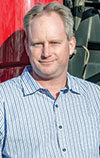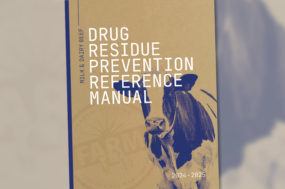A major challenge for today’s hay producer has been to identify and deal effectively with variations in moisture and hay quality. For the feeder of the hay, the challenge is to identify hay quality in order to mix accurate and balanced rations. For the producer, the challenge is to maintain consistency in quality for customers.
Precision in hay and alfalfa production depends on the ability to monitor, record and manage variations in moisture and quality. New, state-of-the-art, precision components are now available to hay producers to give them an advantage in varying crop conditions. These components are designed to take hay production to the next level.
Alfalfa is a high-value crop that is an important ingredient in dairy rations. However, this crop can yield more uncertainty than any other ingredient in the ration. The reason is that the relative feed value (RFV) can vary significantly, and it’s not uncommon to see changes of 30 to 40 points within the same field.
These wide swings can affect everything from the way hay is marketed to the way it is being fed. An accurate way to record and track changes is key.
A moisture-only kit is designed to read moisture and tonnage, and can also calculate and download individual bale records. Consisting of two star-wheel sensors and a processor, this entry-level system helps producers gain a foothold on capturing precision in a hay operation.
For crop preservative application, star wheels measure moisture and tonnage, and apply preservative automatically depending on conditions. As the bale is being made, the system gathers detailed information on moisture, weight and preservative, which can be downloaded as a job record.
A tagger takes all the information from the applicator or moisture kit and places a radio frequency identification (RFID) tag on each bale with the crucial information. When you scan the tag, you have the ability to track and manage each bale from start to finish.
A new system calculates and records the RFV for every bale as it is being made. This new and important feature helps manage and record variations from bale to bale. This system relies on the principle that most of the feed value is in the leaves of the plant. It’s well-known that higher leaf content results in higher density and quality of the bale.
Here’s how it works: The hay grower takes a sample of the hay just before or after it is cut, sends it to a lab and enters that value into the system when it’s time to bale.
As the baler operates, star-wheel sensors take accurate moisture readings, the scale measures the weight, and the processor calculates the dry matter density and RFV for each bale. The RFV is displayed on the baler screen on the go, stored into downloadable job records and can be printed on an RFID tag.
This system is a break from the normal way hay is tested for RFV. It can be a substitute for the conventional coring of bales to determine feed value, which has been the standard for many years. Studies have been conducted on many farms across multiple states, each showing the accuracy of the system.
The advantage of identifying RFV is significant, especially for dairy producers, as sorting and feeding hay according to quality allows for accurate ration adjustments, keeping milk production consistent. Using this technology, the dairyman can get just that – potential cost savings by feeding what the cow needs.
For producers or brokers involved with selling hay, the ability to sort, stack and ship by RFV can greatly improve the ability to make sure each customer gets the quality level they expect. The best way to use these new values is to affix that information to each bale for the life of the bale, from the field to the buyer to the feeder.
Here’s an example of what level of payback can be attained by adding precision components to a baling operation: A dairy farm invests in precision equipment to allow them to sort and feed according to RFV.
With a yearly cost of approximately $3,770 in equipment for the first five years, $1,720 annually in tags and ranging around $575 per year in pre-harvest sampling costs, the farm is able to sort each bale by RFV and adjust rations and feed much more accurately for a dramatic increase in milk output and profitability.
A commercial hay producer who has customers who want more consistent-quality hay than in the past can add precision equipment to the operation to accurately track and manage variations between fields and cuttings. Bales can now be sorted by quality, improving the consistency of product to each customer, allowing hay sales at a projected $10 premium per ton.
An economical alternative to identifying RFV values on the bale is an RFV dye marker kit. Consisting of a 3-gallon tank, three pumps and spray nozzles, operators input RFV ranges into the system they want to identify. The kit sprays each bale with one, two or three stripes of food-grade dye, showing the operator its RFV range for easy identification and sorting.
By adding some of these precision components to their balers, hay producers, operators, hay brokers and feeders are all given added benefits to improve the efficiency and accuracy of their operations, such as individual bale records, efficient sorting of bales, easier inventory control, accurate feeding and rationing, and advanced bale tracking software.
But it doesn’t end there. An additional GPS package for large square balers is available to take productivity to the highest level. By incorporating the GPS, the coordinates of the exact location where the bale was tied off will be written to the tag and saved in the job records.
Using this technology, producers now have the knowledge needed to maximize productivity and plan for future yields. Welcome to 21st-century haymaking. PD
Curtis Hoffman is a marketing manager with New Holland Agriculture. He can be contacted by email.





